Wild ARC is at the beginning of their busiest time of year, when hundreds of babies will be brought through their doors every month. More than 70% of our patients are admitted just between April and September, as wild babies arrive in a massive spring and summer wave.
Staff and volunteers will be working tirelessly throughout the day, feeding, cleaning, and caring for all kinds of species – big and small – each with their own specialized diet and enclosures.
Every year, wildlife rehabilitators care for healthy baby animals that were thought to be orphaned. Just because a baby is alone, doesn’t mean they have been abandoned. A wild baby’s best chance of survival is with their mother. You can help by learning more about some of the most commonly admitted orphans at Wild ARC.
Baby birds out of the nest
A baby bird outside the nest doesn’t always mean trouble. The solution might be as simple as putting them back in the nest, or even just leaving them alone. Some stages of their development will naturally look a little awkward – and while you may want to help, sometimes “help” can do more harm than good.
Found a baby bird? If you’re unsure if a baby bird needs help, call your local wildlife rehabilitator or the BC SPCA Animal Helpline at 1-855-622-7722.
Orphaned hummingbirds
Orphaned hummingbirds are often the first babies to arrive at Wild ARC each spring. Visits from their moms are frequent, but very fast. It’s easy to miss these visits and mistakenly think the little hummingbirds are orphaned. Once separated, it’s not easy to reunite the mom and babies – otherwise healthy birds that have been kidnapped from their mom would then have to be cared for by a wildlife rehabilitator.
These fragile babies require constant care, needing to be hand-fed every 10 minutes when they are young. They are housed in mini-incubators with specially-designed soft mesh baskets to make sure they don’t damage their delicate growing feathers and keep them at the right temperature.

When trimming trees and hedges, check carefully to make sure you don’t disturb any bird nests that could be hidden among the branches. Hummingbird nests can be as tiny as a toonie, with jellybean-sized eggs inside. If you do accidentally cut a branch with a nest, don’t panic – call your local wildlife rehabilitator or the BC SPCA Animal Helpline at 1-855-622-7722 for advice. Sometimes, the solution is as simple as gently re-attaching the branch and nest. Other times, the whole nest will need to go to a wildlife rehabilitator for proper care.
Deer fawns
Deers fawns are one of the most frequently “kidnapped” animals brought to Wild ARC. Well-meaning people accidentally bring healthy fawns to wildlife rehabilitators, thinking they are rescuing them. Not every deer fawn found alone is an orphan! It is normal for a mother deer to leave a fawn alone for long periods of time. She comes back only a few times a day to feed her baby, who waits quietly while hiding from predators.
When “kidnapped” fawns are brought to Wild ARC, rehabilitators try to reunite babies with their mom to make sure that the fawns who remain in care at the centre are truly in need of help. This was the case for one fawn found alone in a backyard, and a deceased deer (thought to be the mother) was reported nearby. When staff found out the adult deer was actually a male, they sprang into action to get the fawn back home. It wasn’t long before mom came looking for her baby, and the pair were successfully reunited. It’s always better if fawns stay with their mother in the first place – if in doubt, check with a wildlife rehabilitator first to help determine if they truly need help.
Unfortunately, not all fawns are so lucky. Many are orphaned as the result of their mom being hit by a car, or injured by off-leash dogs. These fawns are given specialized care at Wild ARC, graduating from formula to solid food, and moving through progressively larger enclosures until they’re ready to be released.
Cottontail rabbits
Eastern cottontails don’t dig burrows – they nest in shallow depressions in grassy areas. These nests are easy to miss, and the surprised people that accidentally uncover them may worry that the babies have been orphaned. Similar to deer fawns, it’s normal for a mother rabbit to leave her babies hidden in the nest for long periods of time. The mothers will come back only a few times a day to feed the babies, who wait quietly while hiding from predators.
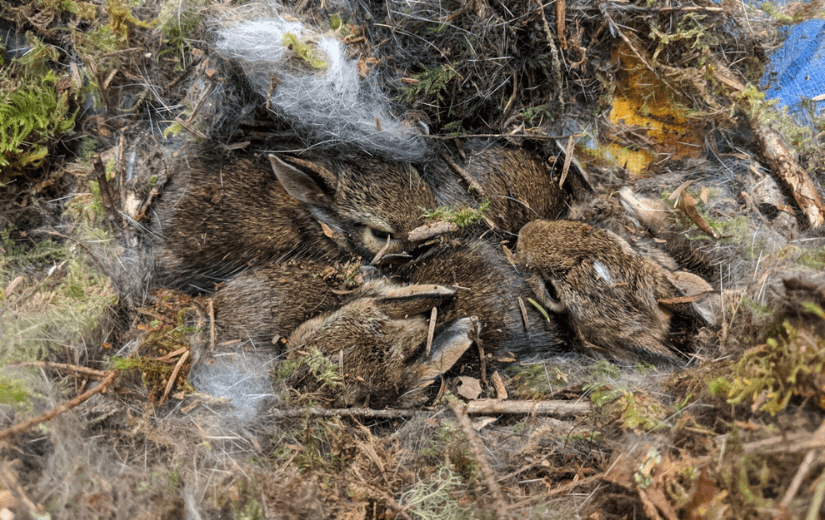
If you suspect the babies might be orphaned, do a parent test:
- Place pieces of long grass or thin twigs in a grid (tic-tac-toe) over the nest (nothing heavy or synthetic!)
- Take a picture of the nest with the grid in place
- Wait 24 hours
- Take another picture and compare with the first
- Has the grid been disturbed?
If the grid has moved, this means the mom has visited and the babies are okay. If the grid is still in place, call your local wildlife rehabilitator or the BC SPCA Animal Helpline at 1-855-622-7722 for advice.
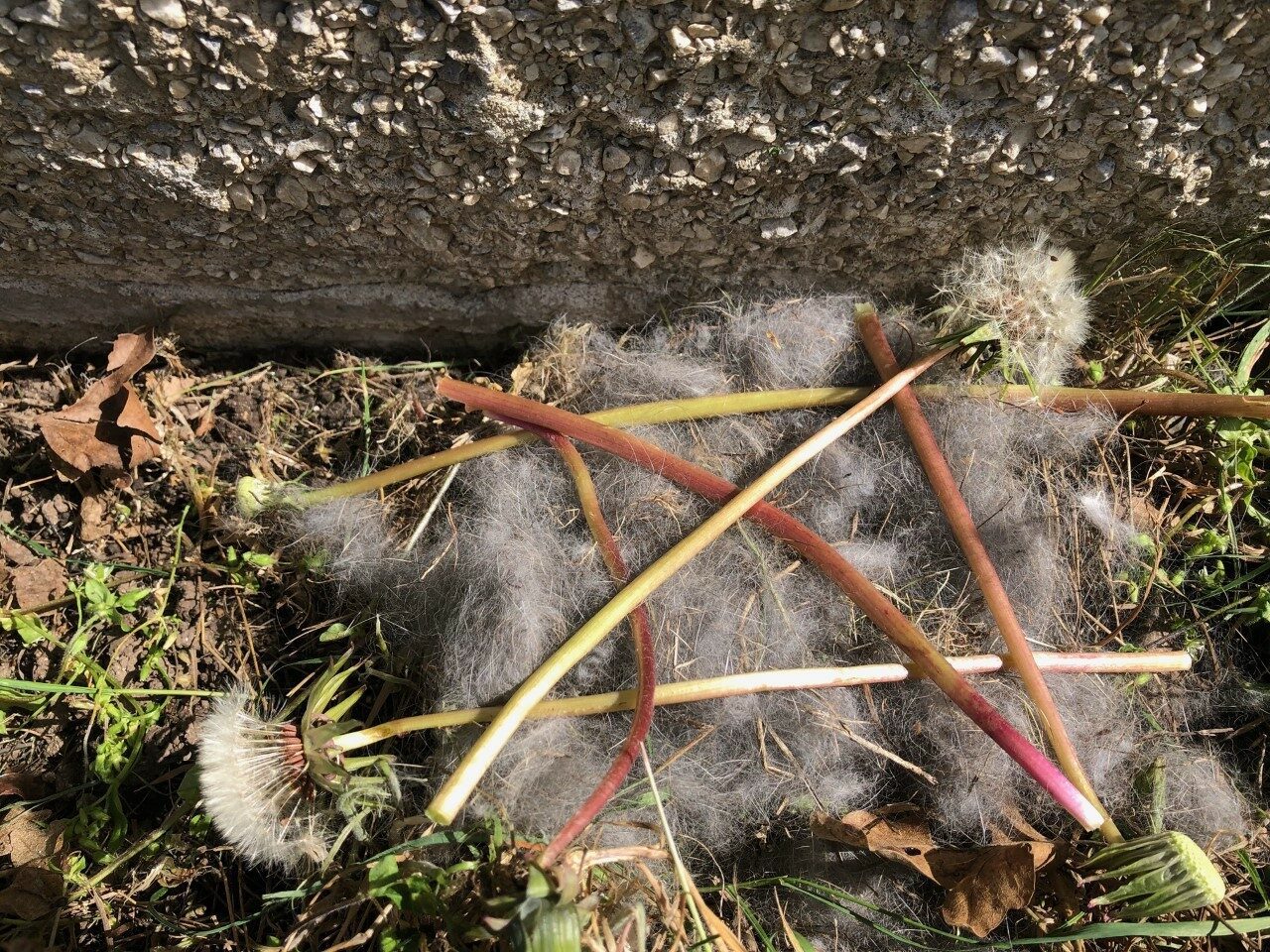
Unlike cottontails, domestic “feral” rabbits do dig burrows. If you see a rabbit in a burrow, this is a domestic rabbit. Learn how to tell the difference between wild and domestic rabbits.
Ducklings and goslings
Families of geese and ducks with their babies in tow is an awww-inspiring sight. When these little ones are born, they are able to walk and swim very quickly. The newly-formed family will make their way to a nearby water source right away. The young birds will stay close by the adult(s), learning all of the skills and social behaviours they will need to survive in the wild.
For Canada geese, both the male and female parents will care for the goslings. You will often see them co-parenting together or in larger groups of adults with other goslings. This means it may be possible to incorporate orphaned goslings into new wild families.
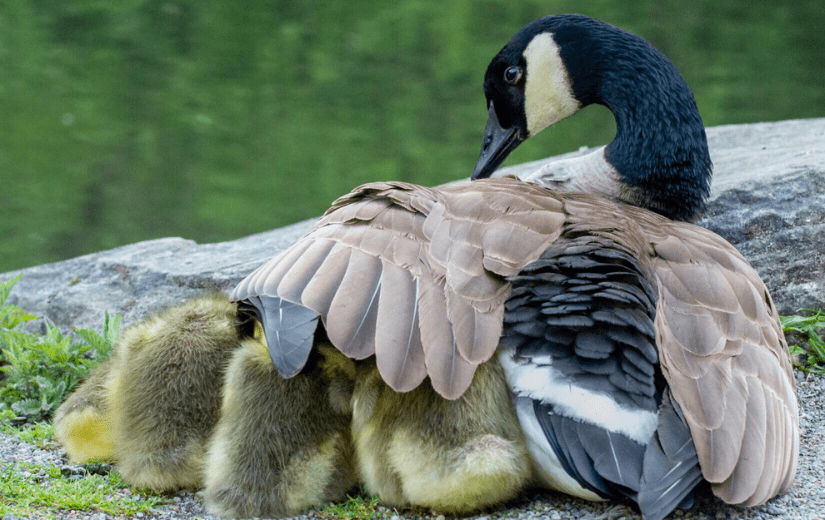
Mallard ducklings are only cared for by their mom. She is very protective of her babies, and is much less likely to accept babies that aren’t hers. Orphaned ducklings typically need to go a wildlife rehabilitation centre until they’re grown and ready for release.
Because they move together in groups, ducklings or goslings found alone – with no adults in sight – are very likely orphaned and need help. If you spot a baby goose or duck on their own, contact your local wildlife rehabilitator or the BC SPCA Animal Helpline at 1-855-622-7722 for advice right away.
In most cases, the best thing you can do for these families is keep a respectful distance. Sometimes, there may be situations where the new family needs help to get to safety, including:
- Duck or goose families attempting to cross busy roadways
- Ducks or geese nesting on high buildings (more than two storeys) where a fall could injure babies as they attempt to make their way from the area
- Nest sites in enclosed areas (solid-fenced balconies, walled courtyards) where babies will be unable to leave once they have hatched
- Ducks or geese nesting near pools, where babies could hop into the water and not be able to get out
Whenever possible, these potentially problematic situations should be addressed by consulting with an experienced wildlife handler.
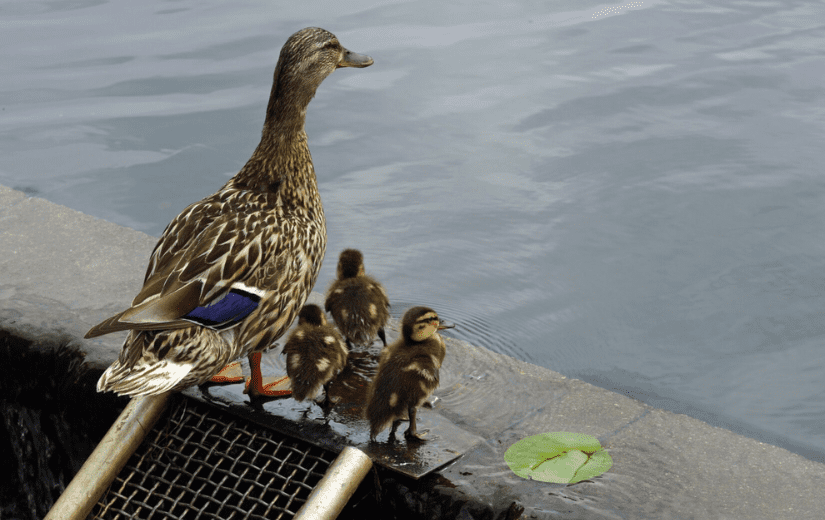
Will moms reject babies that have been touched by people?
Just like us, animal moms are very attached to their babies and are dedicated parents. Birds have a limited sense of smell, but your scent won’t cause the baby to be rejected if you put them back in the nest. Mammals do have a well-developed sense of smell, but they won’t often abandon their babies just because they smell like people. However, minimizing scent will make them feel more comfortable.
If you need to move a baby mammal – for example, quickly moving a fawn off a busy road – wear gloves or use a towel to minimize your scent. Rub the gloves or towel in grass or dirt to help mask the smell.
More wild baby tips:
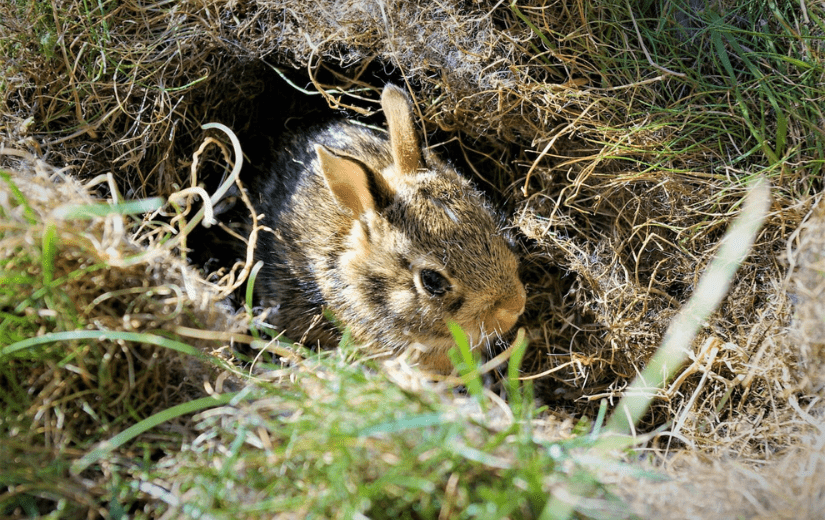
A wild baby will always need help if:
- they have an obvious injury (e.g., visible blood or broken bones)
- there are other dead babies in the nest or nearby
- they have been caught by a cat or the nest is discovered by a cat
- the babies appear lethargic, instead of bright and alert
If you’re ever unsure if a baby needs help, or need advice on wild animals, call your local wildlife rehabilitator or the BC SPCA Animal Helpline at 1-855-622-7722.
